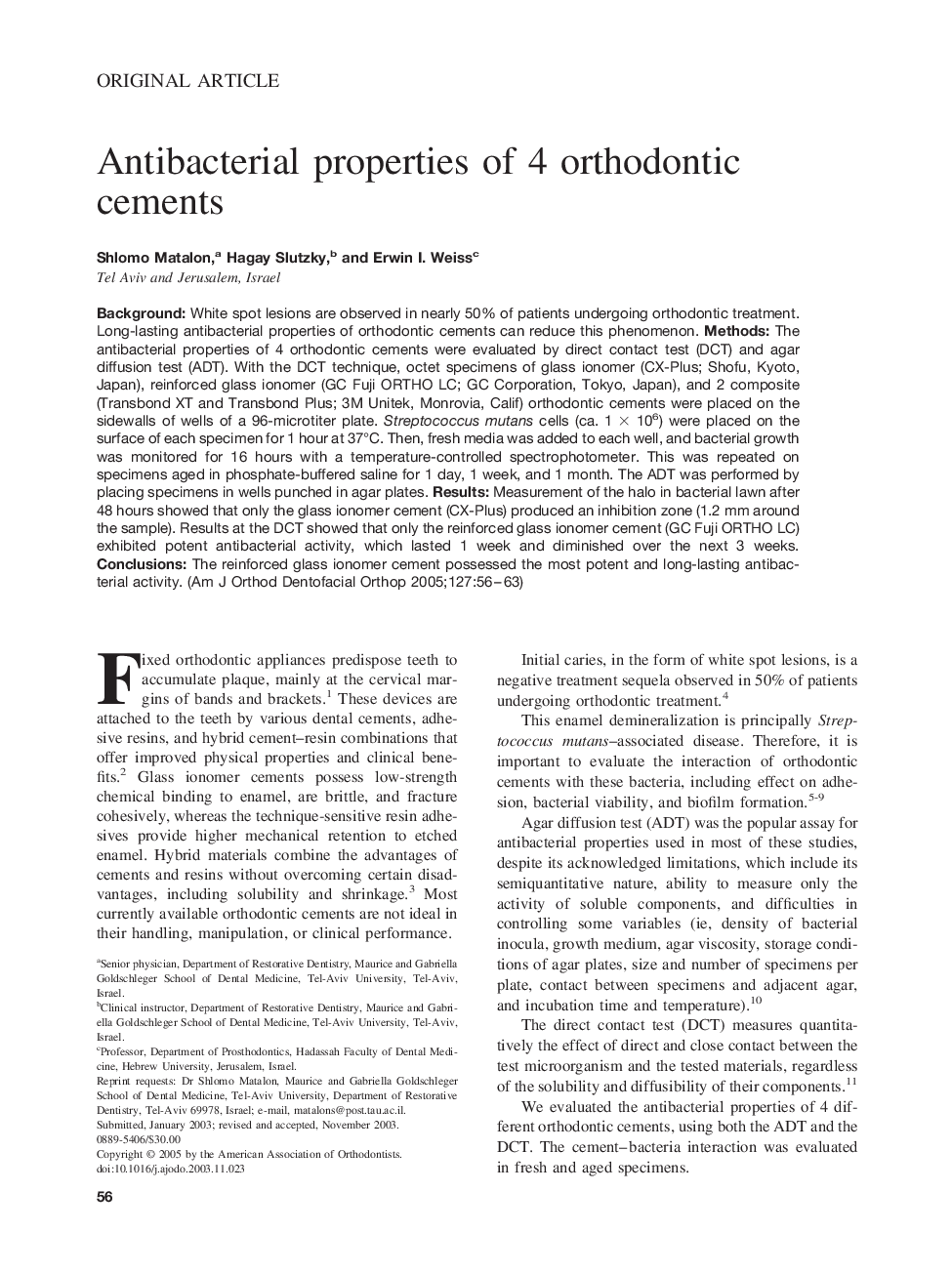| Article ID | Journal | Published Year | Pages | File Type |
|---|---|---|---|---|
| 9993147 | American Journal of Orthodontics and Dentofacial Orthopedics | 2005 | 8 Pages |
Abstract
Background: White spot lesions are observed in nearly 50% of patients undergoing orthodontic treatment. Long-lasting antibacterial properties of orthodontic cements can reduce this phenomenon. Methods: The antibacterial properties of 4 orthodontic cements were evaluated by direct contact test (DCT) and agar diffusion test (ADT). With the DCT technique, octet specimens of glass ionomer (CX-Plus; Shofu, Kyoto, Japan), reinforced glass ionomer (GC Fuji ORTHO LC; GC Corporation, Tokyo, Japan), and 2 composite (Transbond XT and Transbond Plus; 3M Unitek, Monrovia, Calif) orthodontic cements were placed on the sidewalls of wells of a 96-microtiter plate. Streptococcus mutans cells (ca. 1 à 106) were placed on the surface of each specimen for 1 hour at 37°C. Then, fresh media was added to each well, and bacterial growth was monitored for 16 hours with a temperature-controlled spectrophotometer. This was repeated on specimens aged in phosphate-buffered saline for 1 day, 1 week, and 1 month. The ADT was performed by placing specimens in wells punched in agar plates. Results: Measurement of the halo in bacterial lawn after 48 hours showed that only the glass ionomer cement (CX-Plus) produced an inhibition zone (1.2 mm around the sample). Results at the DCT showed that only the reinforced glass ionomer cement (GC Fuji ORTHO LC) exhibited potent antibacterial activity, which lasted 1 week and diminished over the next 3 weeks. Conclusions: The reinforced glass ionomer cement possessed the most potent and long-lasting antibacterial activity.
Related Topics
Health Sciences
Medicine and Dentistry
Dentistry, Oral Surgery and Medicine
Authors
Shlomo Matalon, Hagay Slutzky, Erwin I. Weiss,
